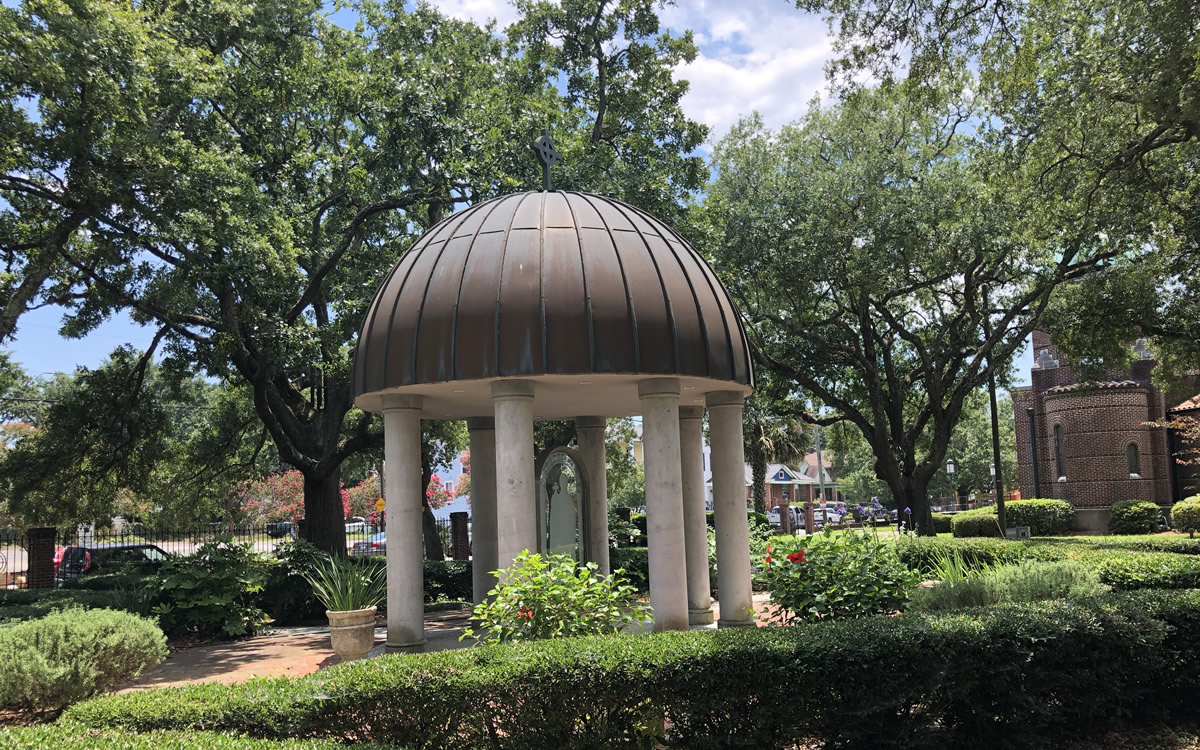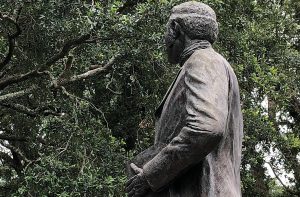
Here’s an interesting, modern gazebo somewhere in the Lowcountry. Tell us where and something about any facet of the photo. Send your best guess of what it is to feedback@statehousereport.com. And don’t forget to include your name and the town in which you live.
Our previous Mystery Photo
 We had several good guesses for our June 19 image, “Imposing statue,” including Robert Smalls and Richard Greener. But the statue displays carpenter and abolitionist Denmark Vesey in Hampton Park in Charleston.
We had several good guesses for our June 19 image, “Imposing statue,” including Robert Smalls and Richard Greener. But the statue displays carpenter and abolitionist Denmark Vesey in Hampton Park in Charleston.
Congratulations to those who correctly identified the statue: David Lupo of Mount Pleasant; Dale Rhodes of Richmond, Va.; Frank Bouknight of Summerville; Lawrence Moore of Folly Beach; Jamie George of Johns Island; Faith Line of Anderson; Jay Altman of Columbia; Allan Peel of San Antonio, Texas; George Graf of Palmyra, Va.; and Charles Davis of Aiken.
Lupo wrote the statue isn’t far from The Citadel: “Denmark Vesey was enslaved until 1799 when he won a lottery and was able to buy his freedom. Later he joined the recently-organized African Methodist Episcopal Church, becoming a class leader. In 1822, he and some other members of the church began plotting a rebellion, but the plot leaked before it could be carried out, and Vesey and a number of others involved were executed. The church where Vesey and the other leaders met was also burned.” [Note: That church was Emanuel AME Church, which is on Calhoun Street.}
Line added, “By 1818, he was preaching to slaves at plantations throughout the region and, drawing on the Bible, he told them that, like the Israelites, they would gain their freedom. Although he would later deny it, he allegedly held meetings at his home to collect arms for an uprising he was planning for as many as 9000 African-Americans in South Carolina. The plan was betrayed by several fearful slaves and he and others were seized. He defended himself ably at his trial, but was sentenced and hanged along with about 35 blacks; some 35 others were sold to West Indian plantation owners. It would have been the largest slave revolt in U.S. history, but its end result was the passing of even stricter laws against African Americans.”
- Send us a mystery: If you have a photo that you believe will stump readers, send it along (but make sure to tell us what it is because it may stump us too!) Send to: feedback@statehousereport.com and mark it as a photo submission. Thanks.















 We Can Do Better, South Carolina!
We Can Do Better, South Carolina!